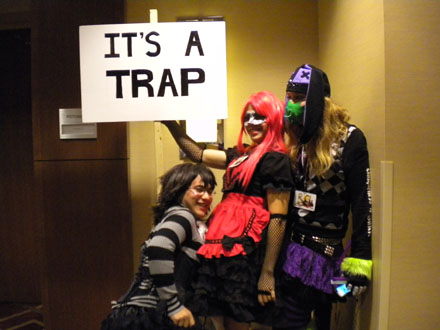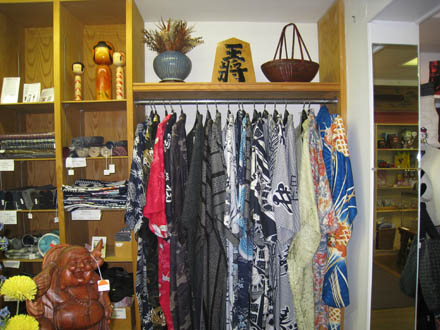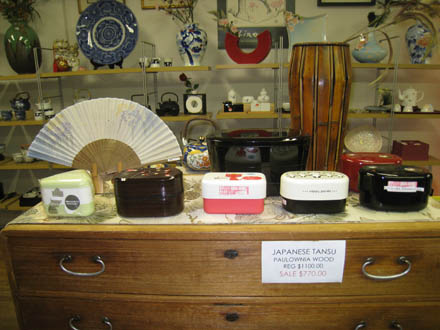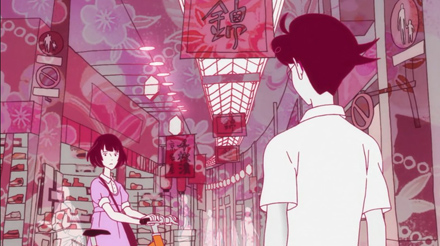 Wendy, a friend and Maria at Anime USA 2010.
Wendy, a friend and Maria at Anime USA 2010.
Edit 3/13/2016 — Since writing this article nearly six years ago, I have come to acknowledge the term “trap” as an extremely offensive one. However, there is nothing offensive about crossdressing at conventions, or in the interviewee’s genuine interest in the hobby. I am preserving this post with that caveat.
One of the best parts of an anime convention is that everyone feels okay being themselves. Fans have built a culture of acceptance that invites all of us to put our personalities out on display. More than that though, we feel comfortable showing this part of ourselves on the outside through appearance and dress.
Perhaps this is why I’ve always encountered a larger than usual population of traps at conventions. I’m not talking about crossplay, either. I mean ordinary women’s convention attire that makes me do a double-take. When I encountered these three attendees above at Anime USA, they asked me to guess who the trap was. The answer? All three.
So I asked (and this is something I could only ask a person in the familiar atmosphere of a convention) why they were dressed up that day. All three of these lovely ladies had fascinating answers, but since I didn’t have a notepad on me I simply took down their email addresses on my cell phone. Two of them, whom we’ll call Wendy and Maria, responded to my query. Here’s what they had to say:
Otaku Journalist: When was the first time you decided to cross dress?
Wendy: First time… Wow, i started young… Maybe 13 or 14 years old. It wasn’t public, just something i did while home alone. I stole mom’s bra and old clothes that didn’t fit her anymore until i could afford to buy my own girl clothes. My first public outing was actually at a convention. I had a lot of support from friends in my anime group but once i was there i just loved it.
Maria: At an anime convention. Everything and everyone around gave me so much self confidence to just be who ever I wanted to be. You dress up as your favorite character… or person… or anything. So why not? I cosplay too, even as guys still.
OJ: Do you only cross dress at anime conventions?
W: After my first successful public outing at my first anime convention, I decided with the support of my friends to cross dress at our community college. And later at the local shopping mall.
M: No, I feel more comfortable in my girly clothes. I always just wanted to feel like myself and dress the part. I love being cute. (Or at least I try to be >_<)
OJ: What sort of reactions do you get? Can you think of an especially interesting one?
W: Reactions are priceless. I wish I had a video camera for all the people I’ve met while cross dressing. Mostly they’re all positive, really funny reactions. I love the “OMG!!! I thought you were a girl!” at the top of their lungs, then turn a dark shade of red, from a guy reaction. Happens a lot. Interestingly enough, on the opposite end of the spectrum, there was this one time a group of friends and I were coming out of a movie theater and I’m bouncing off the walls talking about the awesome movie we just saw and out of no where this car runs up on the side walk almost hitting me and this guy jumps out with a tire iron yelling obscenities at me. Again I have my wonderful friends to thank for basically saving my life.
M: Some terrible ones, some amazing ones. The whole platter… I’ve gotten a death threat or two there, and I got a “more power to you” a million times at a con. As far as the bewildered goes, in the bathrooms when people question which bathroom they chose.
OJ: Which bathroom do you use when you are trapping? (Is it called “trapping”?)
W: Bathroom is easy. I have a male part, albeit you cant tell when I’m dressed up, therefore I go into the male stall. Those are some great expressions too. Ever try peeing while standing up in a corset and a puffy skirt? It ain’t easy. (No clue if “trapping” is the proper term.)
M: Both, either or. I can see why people would be worried about me going into a female bathroom. But… I just wish to be normal and be me…
OJ: Do you think dressing up as a trap has any tie to your sexuality?
W: Yes and no. I am and probably will forever be heterosexual with gay tendencies. If that makes sense at all. Dressing up just makes it easier to be attracted to any humanoid male or female. I am defiantly most deviant when cross dressing.
M: In every single way. But I look at sexuality for the term sex. I am not interested in sex and the trap part of it really isnt for the sexual fancies… it’s for me. I really am not interested in sex like I said. I’m really in life just to have a fun time being me. You know?
—
I am so grateful to Wendy and Maria for opening up to me about their hobby. It really goes to show that even when two people are participating in the same activity, their experiences can infinitely vary.
By the way, you’re probably wondering why I didn’t interview any female traps. Well, if you’re on Twitter, you know that I’ve dressed up as a “reverse trap” before myself for a drag show in college. (Yes, that links to a photo.) However, as Wendy, Maria and I discussed, there’s not as much risk in it for girls.
“Girls wear pants all the time,” Maria said. “But you don’t see a lot of guys wearing skirts.”
I’m want to make “Otaku Journalist interviews” a recurring series. Anyone have an interesting hobby and want to be interviewed? Let me know and put “interview” in the subject line.













